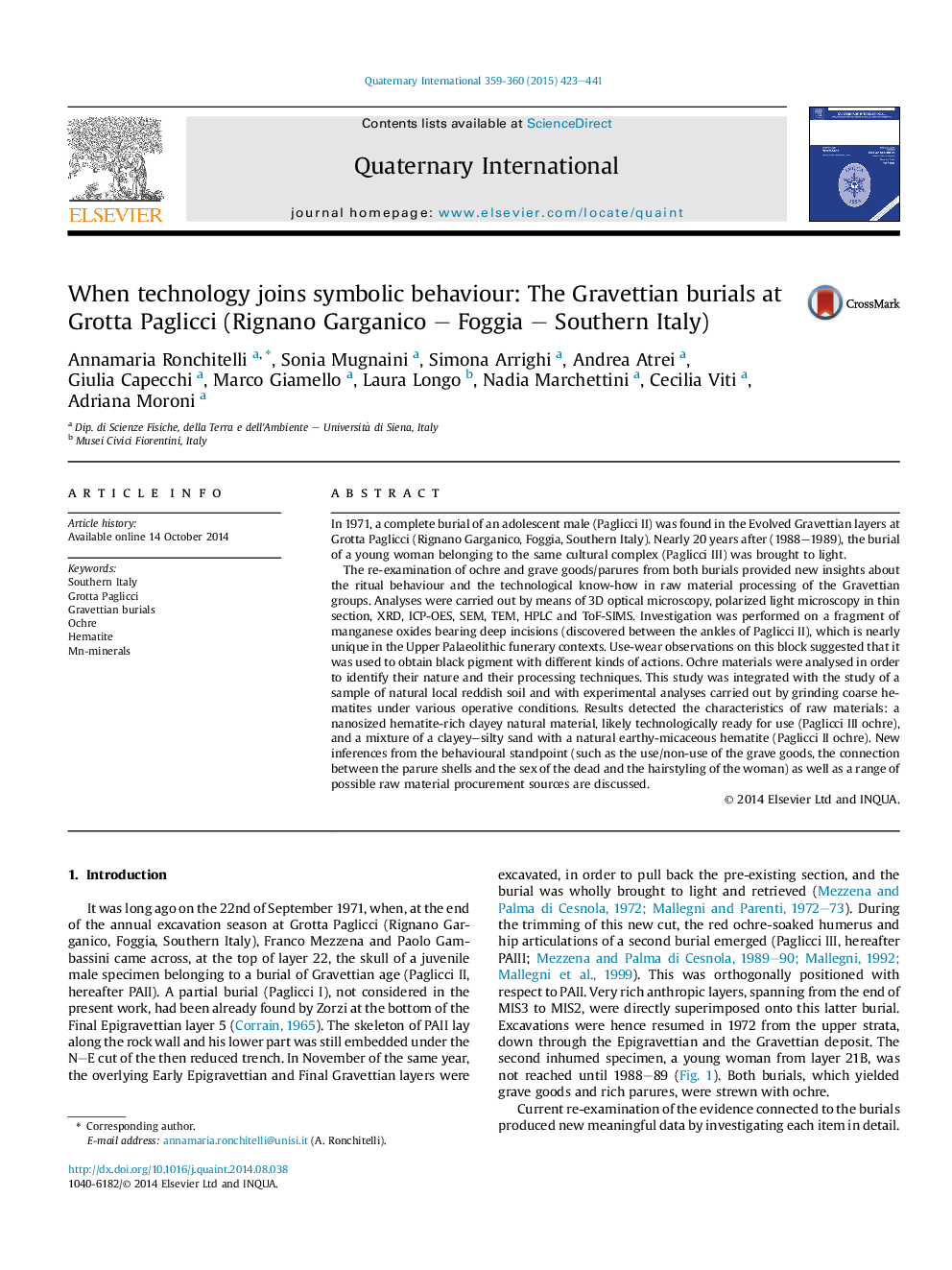| Article ID | Journal | Published Year | Pages | File Type |
|---|---|---|---|---|
| 1040997 | Quaternary International | 2015 | 19 Pages |
Abstract
The re-examination of ochre and grave goods/parures from both burials provided new insights about the ritual behaviour and the technological know-how in raw material processing of the Gravettian groups. Analyses were carried out by means of 3D optical microscopy, polarized light microscopy in thin section, XRD, ICP-OES, SEM, TEM, HPLC and ToF-SIMS. Investigation was performed on a fragment of manganese oxides bearing deep incisions (discovered between the ankles of Paglicci II), which is nearly unique in the Upper Palaeolithic funerary contexts. Use-wear observations on this block suggested that it was used to obtain black pigment with different kinds of actions. Ochre materials were analysed in order to identify their nature and their processing techniques. This study was integrated with the study of a sample of natural local reddish soil and with experimental analyses carried out by grinding coarse hematites under various operative conditions. Results detected the characteristics of raw materials: a nanosized hematite-rich clayey natural material, likely technologically ready for use (Paglicci III ochre), and a mixture of a clayey-silty sand with a natural earthy-micaceous hematite (Paglicci II ochre). New inferences from the behavioural standpoint (such as the use/non-use of the grave goods, the connection between the parure shells and the sex of the dead and the hairstyling of the woman) as well as a range of possible raw material procurement sources are discussed.
Keywords
Related Topics
Physical Sciences and Engineering
Earth and Planetary Sciences
Geology
Authors
Annamaria Ronchitelli, Sonia Mugnaini, Simona Arrighi, Andrea Atrei, Giulia Capecchi, Marco Giamello, Laura Longo, Nadia Marchettini, Cecilia Viti, Adriana Moroni,
